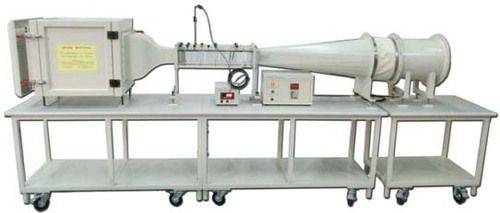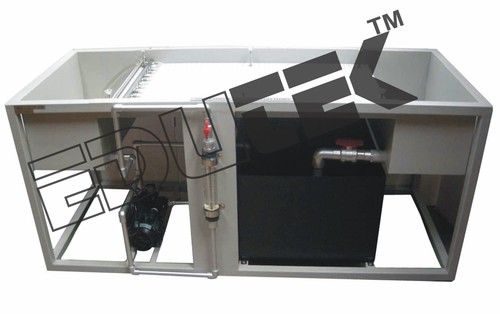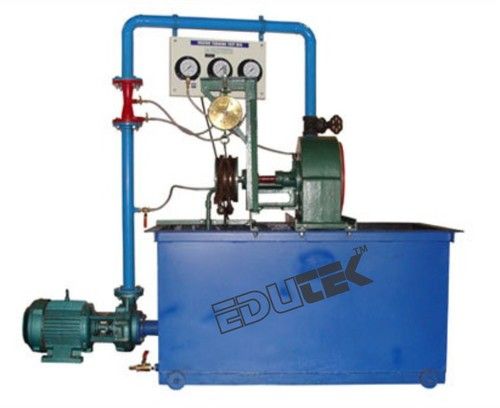Supersonic Wind Tunnel With Schlieren Optics
Product Details:
X
Product Description
UPERSONIC WIND TUNNEL WITH SCHLIEREN OPTICS
Subsonic and supersonic flows behave differently. Thus for example, a contraction in cross-section of the flow at subsonic speed causes an increase in velocity, and at supersonic speed causes velocity to slow down. Understanding these fundamental phenomena of supersonic flows helps in the design of e.g. gas and steam turbines, jets or rockets.
open wind tunnel used to study the aerodynamic properties of various drag bodies at subsonic or supersonic flow.
A fan draws in air from the environment through the supersonic wind tunnel. There is a subsonic nozzle located at the air inlet, in which the intake air accelerates. The carefully designed contour of the subsonic nozzle with integrated flow straightener ensures a uniform velocity distribution with little turbulence in the subsequent measuring section. In the closed measuring section, the air is accelerated further and flows around a drag body (rocket, projectile, double wedge and wedge). Further down the supersonic wind tunnel, the air flow in slowed down in supersonic and subsonic diffusers and comes through a suction filter into the fan. Here, the air is compressed and then emitted back into the environment. A sound damper at the air outlet limits the sound level.
Interchangeable walls with different contours are used in the measuring section to generate flow velocities up to Mach 1,8.
The Schlieren optics supplied allow direct observation of the supersonic flow and the resulting shock fronts. Pressures are detected with sensors, transmitted directly to a PC via USB and analysed there using the software supplied. Additionally, the pressure is displayed on a manometer at the measuring point. The continuous method of operation means there is enough time available for observation and taking measurements.
The well-structured instructional material sets out the fundamentals and provides a stepby- step guide through the experiments.
- Pressure curves in supersonic nozzles (Laval nozzle)
- Pressure curves and losses in tunnel flows with Mach > 1
- Observe shock waves in drag bodies using Schlieren optics
- Determining the Mach number from the angle of the shock waves
- Comparison of theory and experiment
Specification:
- Investigation of pressure curves in supersonic flow
- Visualisation of Mach lines and shock waves using Schlieren optics
- Continuously operating, open supersonic wind tunnel, low pressure principle
- Positive displacement fan with variable speed
- Interchangeable walls in the measuring section produce velocities up to Mach 1,8
- Drag bodies: rocket, projectile, double wedge and wedge
- Manometer for displaying the pressure in the measurement point
- Software for data acquisition (pressure measurement) via USB under Windows Vista or Windows 7
Technical Data:
- Positive displacement fan, variable speed
- Sound-dampened, max. 84dB(A)
- Power consumption: 55kW
Supersonic wind tunnel:
- Cross-section of the measuring section: 100x25mm
- Interchangeable walls for measuring section 1 x straight contour: Ma<1
- 2 x Laval contours: Ma 1,4 and Ma 1,8
Schlieren optics:
- Halogen lamp with 50 and 100W
- 2 adjustable parabolic mirrors
- Adjustable slit diaphragm
- Screen for Schlieren optics
Drag bodies:
- Wedge, double wedge, projectile, rocket
- Recommended ambient conditions: 40% rel. humidity at 25°C
Dimensions and Weight
- L x W x H: 3600 x 825 x 1800mm (wind tunnel)
- L x W x H: 1450 x 1600 x 1750mm (fan)
- L x W x H: 1760 x 600 x 1450mm (Schlieren optics)
- Weight: approx. 1750kg (total)
Tell us about your requirement

Price:
Quantity
Select Unit
- 50
- 100
- 200
- 250
- 500
- 1000+
Additional detail
+91
Email
Other Products in 'Fluid Mechanics Lab Equipment' category
"We deal all over World but our main domestic market is South India"
 |
EDUTEK INSTRUMENTATION
All Rights Reserved.(Terms of Use) Developed and Managed by Infocom Network Private Limited. |














